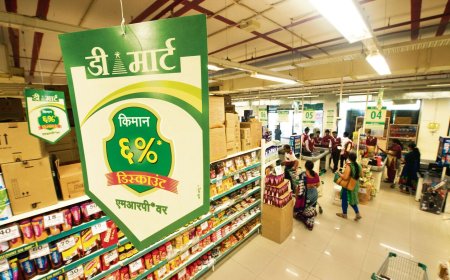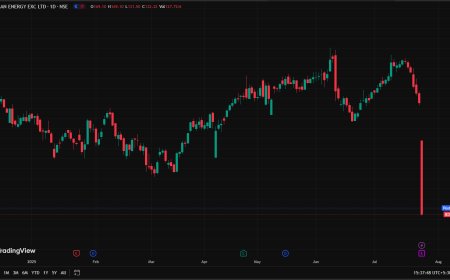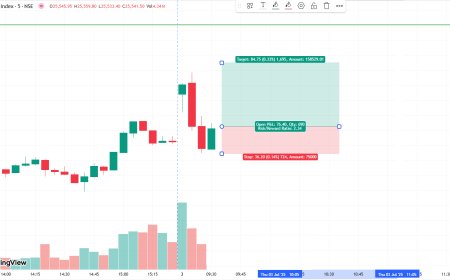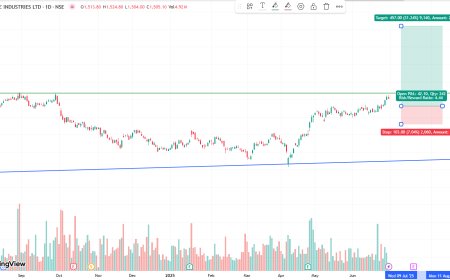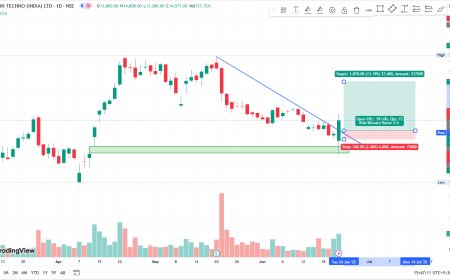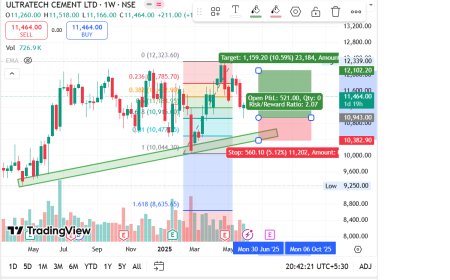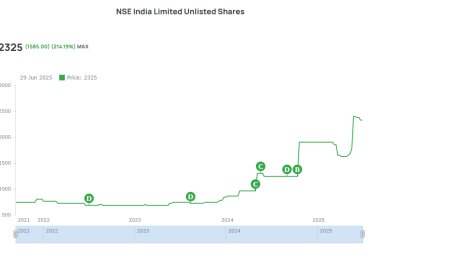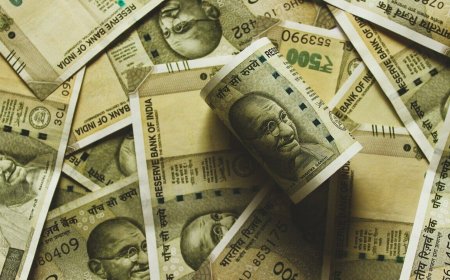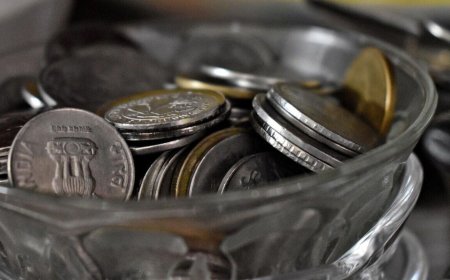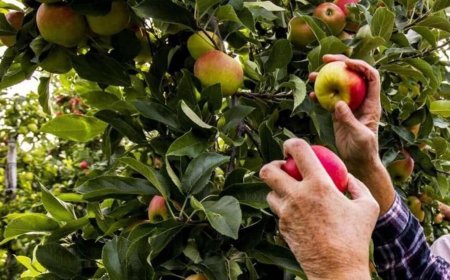India’s Sugar Exports May Fall Short at 8 Lakh Tonnes This Season Amid Global and Domestic Constraints
India is expected to export only 8 lakh tonnes of sugar this season, falling short of the 10 lakh tonnes permitted. Market dynamics, domestic demand, and global pricing are shaping the outlook.

🇮🇳 Sugar Exports: India Set to Export Only 8 Lakh Tonnes This Season, Below Permitted
Quota
ASJ Financial Desk | May 2, 2025
India, one of the world's leading sugar producers, is projected to export around 8 lakh tonnes of sugar in the current 2024–25 season—falling short of the 10 lakh tonnes export quota permitted by the government. This projected underperformance, according to industry bodies and traders, is the result of a combination of domestic demand pressure, tight production estimates, and global price volatility.
The export shortfall not only reflects the internal balancing act between keeping domestic prices in check and supporting mill profitability, but also signals broader headwinds in India’s agro-export ecosystem. With global sugar prices fluctuating and Brazil leading the supply chain, India’s marginal export slippage points to strategic recalibrations underway in the sugar sector.
In this in-depth report, we explore the reasons behind the reduced export volume, its economic implications, and what lies ahead for India’s sugar trade and millers.
Export Shortfall: A Quick Snapshot
The Ministry of Consumer Affairs, Food and Public Distribution had allowed sugar mills to export up to 10 lakh tonnes (1 million tonnes) this season to manage surplus stocks and aid foreign exchange inflows.
However, as of April-end, exports are hovering just above 6 lakh tonnes, with industry experts estimating a final tally of 7.8–8 lakh tonnes by the close of the season.
| Metric | Value |
|---|---|
| Permitted Export Quota | 10 lakh tonnes |
| Projected Exports | ~8 lakh tonnes |
| Export Realization Price | ₹35–37 per kg (FOB) |
| Domestic Realization Price | ₹36.5–38 per kg |
| Estimated Surplus Sugar | 60–65 lakh tonnes |
“Millers are not finding exports financially viable at current international prices. Domestic demand is relatively firm, making local sales more attractive,” said a senior official from the Indian Sugar Mills Association (ISMA).
Why Sugar Exports Are Slipping This Year
A deeper look into the trade flows reveals several contributing factors to the export decline:
1. Higher Domestic Demand
India’s domestic sugar consumption continues to remain robust, especially with summer demand picking up due to beverage, ice cream, and confectionery consumption. Bulk buyers like FMCG giants and beverage makers are also replenishing inventory ahead of the monsoon lull.
“The domestic demand curve has stayed strong, reducing the urgency to push for overseas sales,” explained a Maharashtra-based mill owner.
2. Unfavorable Global Price Dynamics
International sugar prices, while relatively firm, have not aligned well with Indian FOB expectations. Key buyers like Indonesia, Bangladesh, and the Middle East are sourcing cheaper raw sugar from Brazil, which is enjoying a record production year.
Brazil’s Real has also depreciated against the U.S. dollar, making their sugar exports more competitive than India’s.
3. Policy Uncertainty and Delays
The government’s staggered quota approval mechanism, though aimed at ensuring food security, has led to delays in shipment planning. Exporters argue that lack of clarity and slower permit issuance hampered bulk deal closures with international clients.
4. Logistics and Freight Costs
Maritime shipping costs to Africa and Southeast Asia have surged in Q1 2025, especially for dry commodities like sugar. Combined with limited container availability in western Indian ports, logistical constraints also weighed down export volumes.
Global Sugar Market Trends
The global sugar market is witnessing mixed signals:
-
Brazil is expected to produce 45 million tonnes of sugar this season, a 7% YoY rise, pushing global supply higher.
-
Thailand’s production dipped due to erratic rainfall, partially offsetting the Brazilian glut.
-
The FAO Sugar Price Index stood at 130.4 in April 2025, down 3.2% from March, indicating easing demand-supply pressure.
Indian millers find themselves caught in this pricing maze—unable to command a premium abroad while seeing better price realization at home.
Millers’ Margin Math: Domestic vs Export
Export margins for Indian sugar mills have narrowed significantly. Here’s how the math plays out:
| Particulars | Export (FOB) | Domestic (Ex-Mill) |
|---|---|---|
| Realization Price/kg | ₹35–37 | ₹36.5–38 |
| Freight & Handling Cost | ₹2–3 | ₹0.5–1 |
| Net Margin/kg | ₹1–2 | ₹2.5–3.5 |
With domestic margins higher and payment cycles faster, many mills have shifted focus back to the local market, especially in Uttar Pradesh and Karnataka.
🇮🇳 Government's Strategic Sugar Balancing
The Indian government has taken a cautiously calibrated approach to sugar exports this season. Key priorities include:
-
Ensuring domestic price stability during election season.
-
Maintaining adequate buffer stock for ethanol blending.
-
Controlling inflation in food commodities ahead of monsoon volatility.
In a recent press briefing, the Ministry emphasized that the export quota could be reviewed in June based on domestic stock levels, sowing data, and monsoon forecasts.
Ethanol Diversion: The Other Piece of the Puzzle
One of the most impactful developments this season is the diversion of sugarcane juice and B-heavy molasses for ethanol production. With India targeting 20% ethanol blending by 2025–26, over 45 lakh tonnes of sugar equivalent is expected to be diverted towards ethanol this year.
This limits the physical sugar available for export, thereby tightening domestic supply and influencing miller decisions to prioritize internal sales.
Industry Voices
“We were ready to export but global prices were not favorable. If international demand improves, mills will be ready again,” said Prakash Naiknavare, MD, National Federation of Cooperative Sugar Factories.
“India’s ethanol push is a double-edged sword—it reduces export surplus but enhances mill liquidity,” noted an analyst at Moneycontrol.
What to Expect Going Forward
The export shortfall, though disappointing for some traders, is not necessarily a crisis. The global sugar market remains structurally tight, and Indian mills may still get spot opportunities if Brazil faces shipping delays or weather setbacks.
Key indicators to watch include:
-
Monsoon performance (June–September) for cane sowing health.
-
Government’s mid-year export quota review.
-
Global ethanol market developments, especially in Latin America.
What This Means for Investors and the Economy
-
Public sugar companies like Balrampur Chini, Dhampur, and Dwarikesh may see stronger Q1 earnings from domestic sales and ethanol margins.
-
Export-related revenue dip could be neutralized by strong local realizations.
-
No significant pressure on forex reserves, as sugar exports form only ~2.5% of total agri exports.
Retail investors and institutional funds tracking agri commodities may pivot toward ethanol-related plays rather than export themes this year.
India’s sugar export performance this season may fall short of its full potential, with only 8 lakh tonnes likely to be shipped versus the permitted 10 lakh tonnes. Yet, this shortfall is not rooted in weakness—it is the result of conscious domestic prioritization, evolving ethanol policies, and non-competitive international pricing.
As the sugar industry navigates these complexities, the focus appears to be shifting from volume-centric growth to value-driven strategy, with ethanol and domestic optimization at the forefront.
What's Your Reaction?
 Like
0
Like
0
 Dislike
0
Dislike
0
 Love
0
Love
0
 Funny
0
Funny
0
 Angry
0
Angry
0
 Sad
0
Sad
0
 Wow
0
Wow
0





























